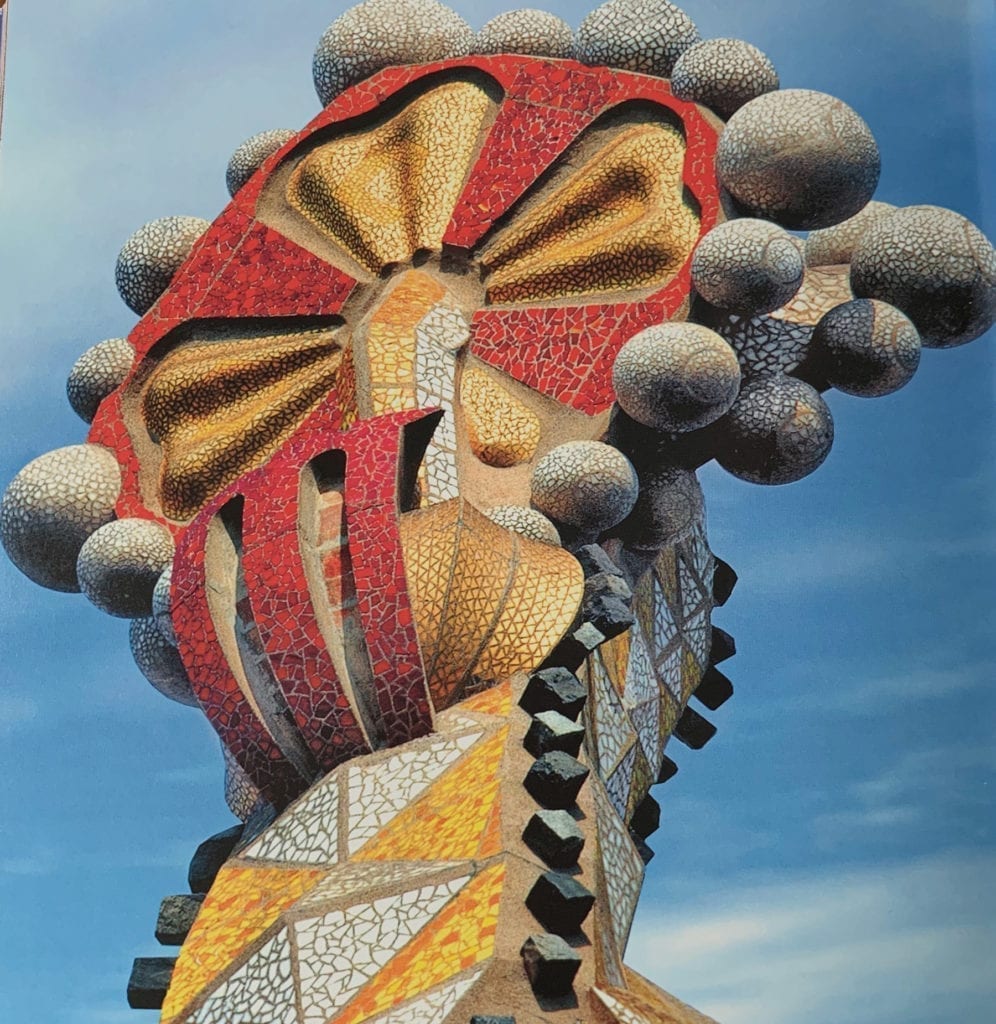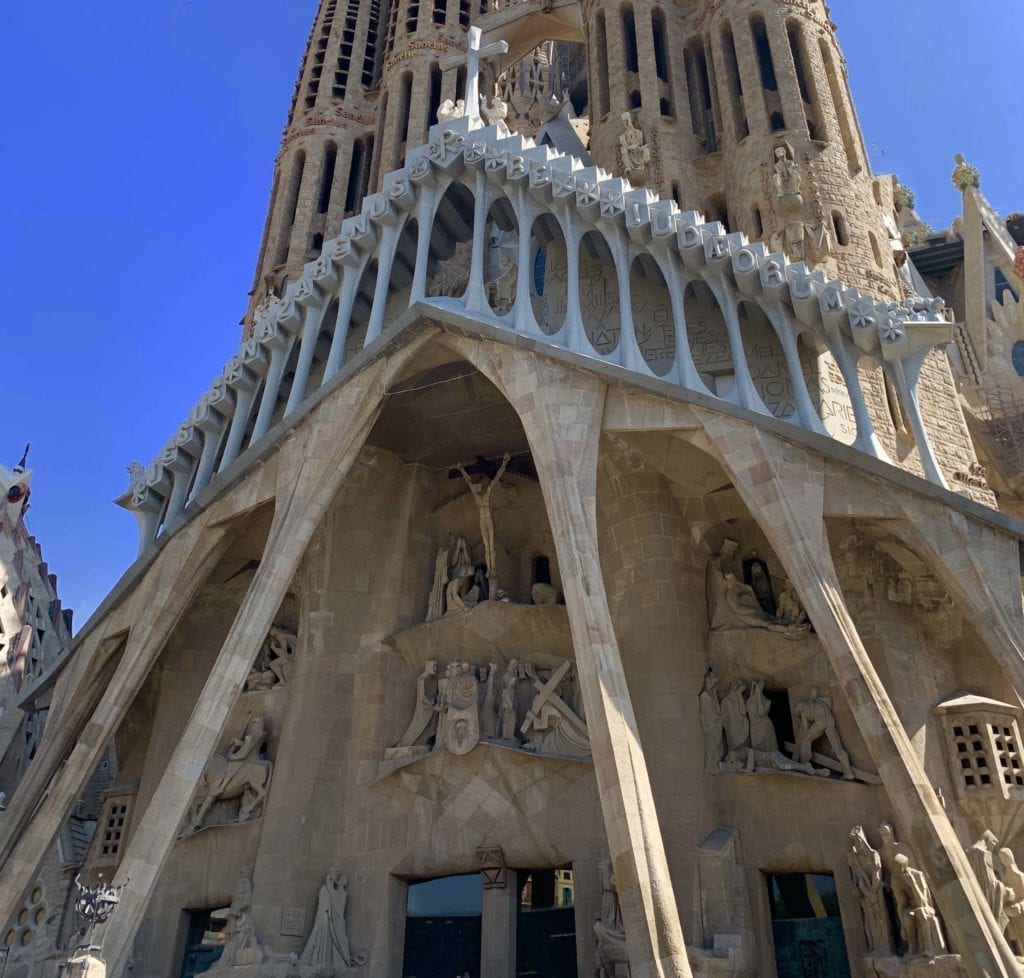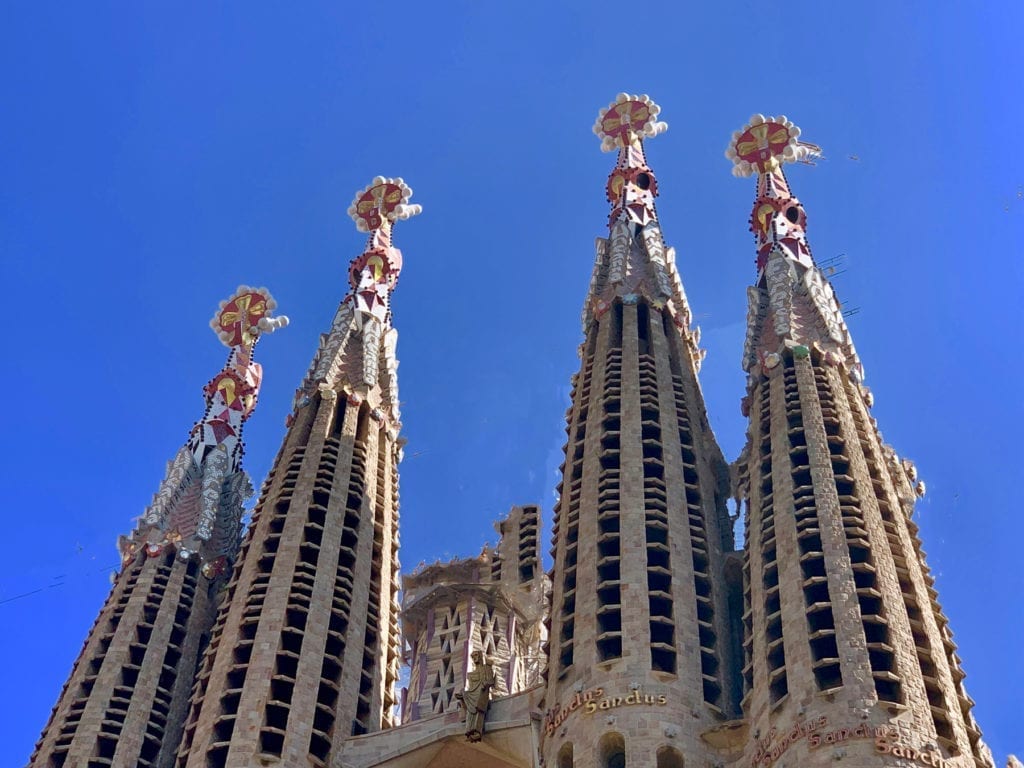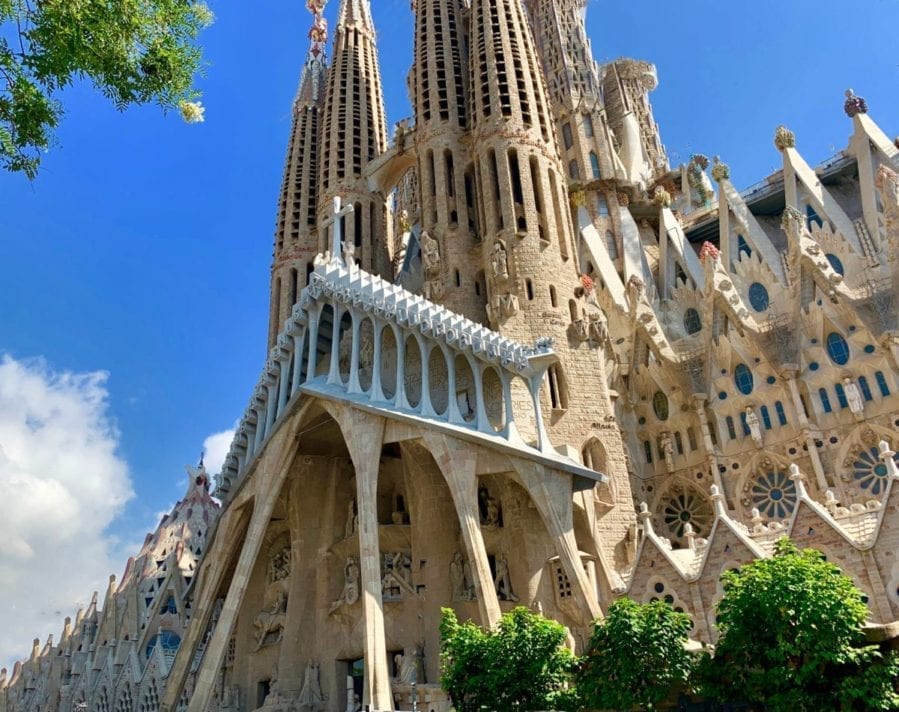La Basilica de la Sagrada Familia represents the culmination of Antoni Gaudi’s mastery. This glorious church lives and breathes. It’s a sacred place, even for a heathen like me. I hesitate to ever use the words masterpiece and genius. But Gaudi’s worth these exceptions. He devoted his entire life to this architectural art – his church.
Click below for a podcast version of this piece.

At Home With Antoni Gaudi
I longed for more than thirty years to visit this landmark. Pictures of Gaudi’s mastery intrigued me in high school and college. Though not religious in any way, it became my mission to visit La Basilica de la Sagrada Familia. Turns out, it was worth the wait. The place transported me – so peaceful. Its vast complexity overwhelms, yet it feels welcoming and warm. How did Gaudi do this? For one, he uses soft edges and one-of-a-kind shapes. These give a handmade resonance to the enormous space. It feels like home.
That’s an extraordinary feat because this basilica can hold 6,000 people. It’s massive. Yet, the cavernous space doesn’t make one feel small. Instead, the structure envelops visitors. It grants a feeling of belonging, comfort, and community. People seem to be even more at ease than they should. For instance, photography’s forbidden inside, There are signs posted everywhere to make this clear. But during my visit many took pictures anyway. One bold woman even held her standard-size iPad above her head to take them.
For me, it was gift enough to visit la Sagrada Familia. I didn’t need photos to appreciate the experience. It was unforgettable. A reflective service, the priest spoke in seven languages. But it wasn’t his words that mattered most to me. His gentle voice was like a waterfall. La Sagrada Familia felt safe and loving – like a friend. It’s a church, yes. But so much more.
Gaudi’s Indoor Forest
Gaudi started work on the La Basilica de la Sagrada Familia in 1883. He continued to also work on other projects until 1914. At that point he dropped everything else to devote all effort to the church. Gaudi even lived in the basilica basement. It was his entire life. When he died in 1926, they buried him in the Sagrada Familia. This sacred structure is a synthesis of his architectural evolution. Soft edges mirror nature with forms that bring the space to life.
He modeled the inside after a forest. There are no interior walls in the crypt where services are held. Instead, inclined columns rise like branching trees. They seem to reach into the clouds. It feels harmonious and satisfying – like a walk in the woods. Yes, those woods are limestone architectural wonders. Still, the looming grace of Gaudi’s organic shapes transports visitors. It’s church but outside. Emily Dickinson’s Some Keep the Sabbath speaks of this. She says, “And an Orchard, for a Dome” about prayer outside traditional structures.
Gaudi created a lasting legacy with La Basilica de la Sagrada Familia. In fact, he’ll soon be canonized as a saint. His miracle? This basilica. That’s because Antoni Gaudi gave his life for this grand place. When he gave up all other projects for this Gaudi was one of the most coveted architects. He was world-famous and beloved. But the only thing he loved was La Basilica de la Sagrada Familia. Gaudi never married or even really sought romance. His heart belonged to this art.

Facades de La Basilica de la Sagrada Familia
La Basilica de la Sagrada Familia has three facades. They’re dedicated to the birth, passion, and glory of Jesus. During Gaudí’s life he only saw the crypt, apse, and part of the Nativity facade finished. Each holds biblical significance. The Nativity facade is the only one Gaudi designed alone. This side shows Jesus’ birth to adulthood. The Passion and Glory facades arise from Gaudi’s gorgeous sketches. They only existed in his mind and on paper during his lifetime. So, these drawings were his only direct input on the construction.
The Passion facade depicts Jesus’ sacrifice. It shows the Last Supper, Judas’ betrayal, and later the Resurrection. Then we see Jesus’ naked crucifixion. This is a rarity for consecrated structures. History notes that Jesus would be nude during crucifixion. It makes logical sense. But Gaudi had to get permission to do this. He wanted to show the impact and shame of the crucifixion. It was crucial to him as part of the ultimate sacrifice.

The nativity facade starts at the lower level with the Annunciation. Above lies the nativity then Jesus’s childhood and adolescence. Finally, there’s Mary’s rise to Madonna. In this section Joseph looks like Gaudi. It’s a tribute. This side serves as main entrance to the basilica. My favorite part of La Basilica de la Sagrada Familia lies on this side. Its top towers brighten the sky with vivid mosaics. Check out the close-up of these in the top picture of this page.
These are the crown glory of this grand work. Seeing it in person swells the soul and warms the heart. I was forever changed in front of La Basilica de la Sagrada Familia. It stayed with me. In fact, I dreamed about it that night and many after too.
Current plans for the church set the finish date at 2024. I’ll return for that celebration and before as well to see more of Gaudi’s inspiring work. His life-affirming buildings bring wonder to Barcelona. I can’t wait to see them all.
